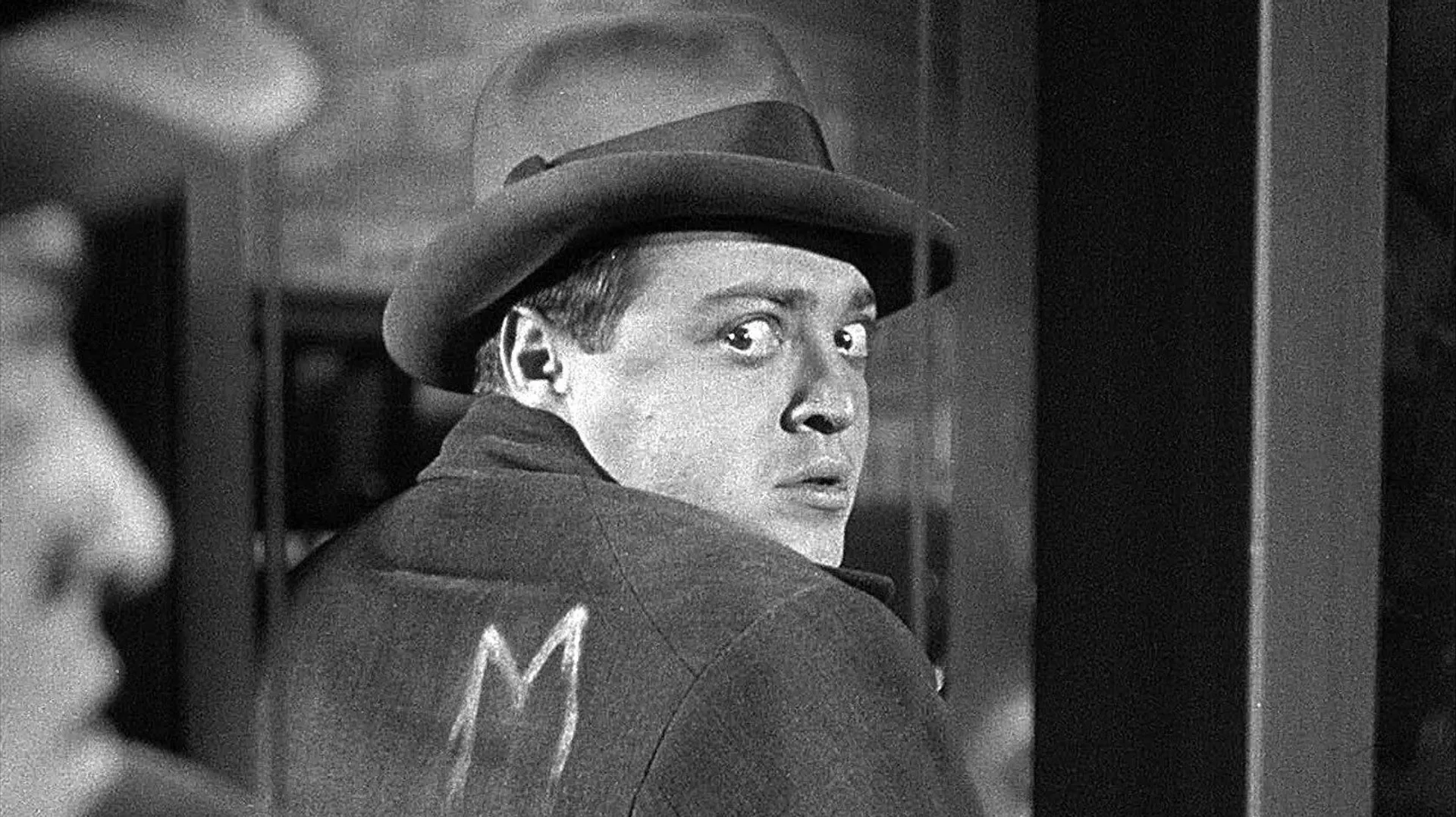
© Nero-Film AG
A country on the Brink
Film
M
Year
1931
Director
Fritz Lang
DOP
Fritz Arno Wagner
Country
Germany
Timestamp
01:03:04
18.10.2025
Fritz Lang’s M (1931) is far more than a crime thriller. Produced at the edge of a collapsing democracy, it stands as one of cinema’s most striking portraits of a society unraveling. As one of Germany’s first sound films, M combines social critique with innovative audiovisual design to depict a world on the brink — a prophetic reflection of the anxieties that would soon culminate in the rise of fascism.
The Weimar Republic at the Edge
When M was released in 1931, Germany was reeling from the Great Depression. Over six million people were unemployed, the democratic coalition government had collapsed, and Chancellor Heinrich Brüning ruled by emergency decree. The Weimar Republic was disintegrating, while extremist movements gained momentum on both the left and right.
In this climate of fear, instability, and distrust, Lang situates his film. Berlin is gripped by panic after a series of child murders. The city’s population turns against itself — hysteria spreads, accusations fly, and mobs form in the streets. The police, overwhelmed, raid criminal hangouts, while ordinary citizens become informants. The film captures a collective loss of faith in institutions and a longing for order — any order, even authoritarian.
Mirrors of Authority
One of Lang’s sharpest observations lies in his portrayal of the police and the criminal underworld as parallel systems of power. Both groups are frustrated by the murderer’s disruption — the police because he defies their authority, and the criminals because his crimes bring constant raids and scrutiny.
In one of the film’s most brilliant sequences, Lang cuts between a police meeting and a gathering of gang leaders, using parallel editing to link their dialogue. Sentences begun by the police are completed by criminals, and vice versa. The message is chillingly clear: both institutions operate by the same logic, both are obsessed with control, and both seek to eradicate what they deem “abnormal.”
This parallelism serves as an allegory for the Weimar Republic itself — a weakened state whose authority is increasingly challenged by radical, extralegal forces. The criminals’ organized, bureaucratic structure echoes the totalitarian systems about to emerge, promising to restore “order” at any cost.
The Trial and the Language of Extermination
The film’s climax, where the underworld captures the murderer and stages its own kangaroo court, is an extraordinary moment of political foresight. The verdict is predetermined; there is no defense, no due process — only the language of extermination. The rhetoric of the mob leader Schränker (played by Gustaf Gründgens), with his black leather coat and escalating fury, eerily anticipates the demagoguery of Joseph Goebbels. His cry that the murderer “has no right to exist” echoes the genocidal logic that would soon dominate Nazi discourse.
Lang exposes the moral collapse beneath the veneer of justice. The mob’s cry for vengeance — “Kill him!” — and Schränker’s declaration, “This beast has no right to exist; it must be exterminated,” employ the rhetoric of annihilation that would later become central to Nazi ideology. Lang points out the semantic — and moral — error: you can kill an individual, but to “exterminate” properly applies only to a species or a people. The mob’s fury embodies what the Nazis would later call the gesundes Volksempfinden, the “healthy sentiment of the people.” M thus becomes a defense of the rule of law and a warning against populist justice, where emotion overrides reason.
The Mark of Exclusion
One of M’s most iconic moments comes when the murderer (Peter Lorre) is marked with a chalk “M” on his back — “M” for Mörder (murderer). This mark turns him into a hunted object, stripped of identity and humanity. Symbolically, it represents the mechanism of exclusion — society’s need to identify and isolate its “others.”
In retrospect, the gesture carries haunting resonance. The chalk “M” prefigures the stigmatizing symbols of Nazi persecution, such as the yellow Star of David. Lang visualizes, years in advance, the process by which fear and hysteria can transform social order into a system of collective scapegoating.
M remains one of the most disturbing time capsules of late Weimar Germany — a portrait of a society oscillating between chaos and tyranny. Lang depicts a people desperate for stability, willing to abandon justice for vengeance. The film’s procedural realism, psychological depth, and moral ambiguity make it a work of enduring relevance.
It was no coincidence that the Nazis viewed M as subversive. Lang, who fled Germany in 1934, and Peter Lorre, who escaped as a Jewish actor in 1933, created a film that diagnosed the sickness within their society before it metastasized into dictatorship. Nearly a century later, M still resonates — as a chilling study of mass hysteria, media panic, and the seductive power of authoritarian order.